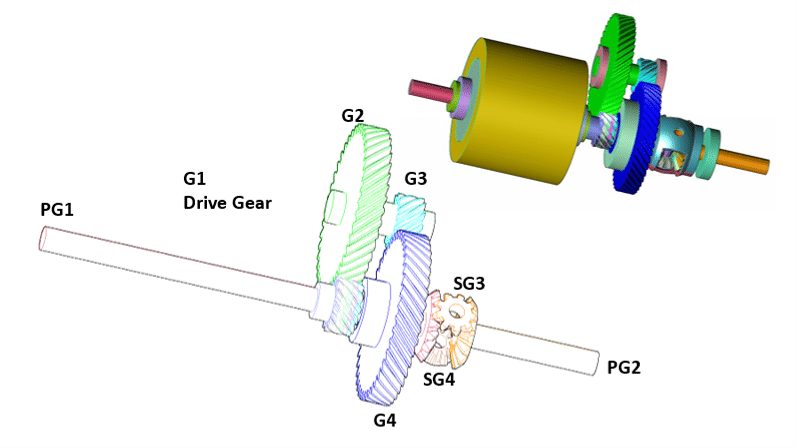Dimensional Control Systems (DCS) Examines E-Powertrain Electric Motor Geartrain Simulated Testing with the Digital Twin
The performance of an Electric Vehicle Power Unit is directly connected with critical tolerances. Tolerances drive opportunities for performance enhancement with cost reduction. The tests normally used to determine and validate tolerances are both expensive and time consuming with prototype parts. By replacing the initial tests with Digital Twin simulations, results can be obtained quickly, and at a much lower cost. This article discusses one of these tests and the results.
This upfront simulation method illustrates the use of digital technology to create a parametric family of designs with statistical tolerances as the parameter. The result is a digital validation of the design variation to reduce prototype builds or solve build issues while increasing innovation.
Once an adjustable statistical tolerance has been established, the tolerances can be split into the individual components. For example, in the concept design phase, the bearing may represent the combination of the gear grade, bearing specifications, and the housing specifications. Dividing the tolerance up using statistical cost analysis can balance the design tolerances at the lowest cost.
Gear micro geometry in the form of gear crowning, gear backlash, or tooth clearance is another example of the method. Adjusting the tolerance as a parameter provides the geometric information to ensure the gear system backlash meets the required specifications.
 Electric vehicle power unit gears.
Electric vehicle power unit gears.
For this study, tolerance analysis software integrated into CAD software was used to simulate both part and process variation. In this case, 3DCS Variation Analyst software was used. This enables engineers to analyze their manufacturing process and determine how it affects both the assembly and final product functionality. The part tolerances, assembly process, and product measures are functionally transformed into the ability to predict and fix quality issues before the builds of concept, prototype, pre-production, and production.






